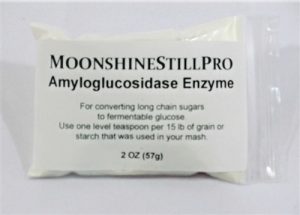The first part of this article describes brut IPA and discusses the grist and the mash.
A step mash can yield a highly fermentable wort that results in a dry to very dry beer. However, if you wish to go beyond “ordinary dryness” — as the pioneers of brut IPA do — you need something extra. That thing is an exogenous enzyme (i.e. an enzyme you add) that will degrade the “dextrins” in your wort to a degree beyond that accomplished in any mash. For the brewers of brut IPA, the enzyme of choice is amyloglucosidase. [Read more…]



Recent Comments